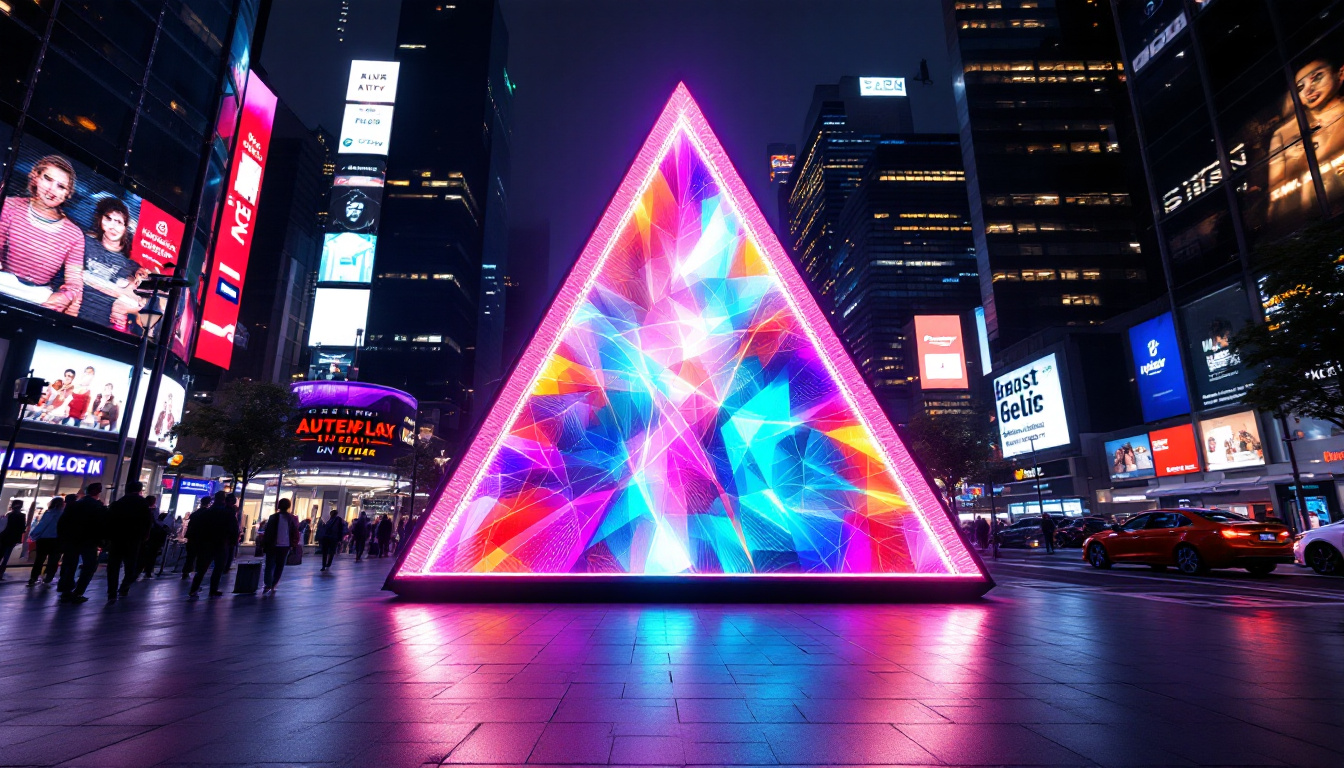In the world of modern technology, displays play a crucial role in how we interact with devices. Among the various types of displays available, LCD (Liquid Crystal Display) and LED (Light Emitting Diode) technologies are among the most prevalent. Understanding how these displays work not only enhances appreciation for the technology but also aids in making informed choices when purchasing devices. This article delves into the workings of LCD displays and explains the relationship between LCD and LED technologies.
Understanding LCD Technology
LCD technology has revolutionized the way visual information is presented. It employs liquid crystals to modulate light, creating images on screens. Unlike traditional cathode ray tube (CRT) displays, LCDs are thinner, lighter, and more energy-efficient, making them ideal for a wide range of applications from televisions to computer monitors.
How LCD Works
The fundamental principle behind an LCD is the manipulation of light using liquid crystals. An LCD panel consists of several layers, including a backlight, polarizers, liquid crystal layer, and color filters. The backlight, usually composed of fluorescent or LED lights, provides the necessary illumination for the display.
When an electric current passes through the liquid crystal layer, the orientation of the liquid crystals changes. This change in orientation affects how light passes through the crystals, allowing for varying degrees of light to be transmitted. The polarizers further refine this light, ensuring that only certain wavelengths reach the viewer’s eyes, thus creating the desired colors and images.
Components of an LCD Display
To fully grasp how an LCD functions, it is essential to understand its key components:
- Backlight: The source of illumination, typically consisting of LED or fluorescent lights.
- Polarizers: These filters ensure that light waves are oriented in a specific direction, which is crucial for the functioning of liquid crystals.
- Liquid Crystal Layer: The core component that modulates light based on electrical signals.
- Color Filters: These filters create the full spectrum of colors by allowing only specific wavelengths of light to pass through.
Each of these components plays a vital role in the overall functionality of the display, ensuring that images are rendered accurately and vibrantly. Additionally, advancements in LCD technology have led to the development of various types, such as IPS (In-Plane Switching) and TN (Twisted Nematic) panels, each offering unique benefits. IPS panels, for instance, are known for their superior color accuracy and wider viewing angles, making them a popular choice for graphic design and professional photography. On the other hand, TN panels are often favored for gaming due to their faster response times, providing a competitive edge in fast-paced scenarios.
Moreover, the evolution of LCD technology has paved the way for innovations like 4K and 8K resolutions, which significantly enhance image clarity and detail. These high-definition displays utilize advanced pixel arrangements and improved color reproduction techniques, allowing viewers to experience a more immersive and lifelike visual experience. As technology continues to advance, the integration of features like touch sensitivity and flexible displays is also becoming more prevalent, further expanding the potential applications of LCD technology in everyday life.
The Role of LED in LCD Technology
While LCDs and LEDs are often mentioned together, they are not the same. However, LEDs have become integral to LCD technology, particularly in terms of backlighting. Understanding this relationship is essential for grasping how modern displays work.
LED Backlighting Explained
LED backlighting has largely replaced traditional fluorescent backlighting in LCDs due to its numerous advantages. LEDs are more energy-efficient, have a longer lifespan, and provide better brightness control. This results in improved contrast ratios and color accuracy, enhancing the overall viewing experience.
There are two primary configurations for LED backlighting in LCDs: edge-lit and full-array. Edge-lit LEDs are positioned along the edges of the screen, allowing for a thinner design. In contrast, full-array LED backlighting uses a grid of LEDs behind the entire screen, providing more uniform brightness and better local dimming capabilities. This local dimming feature enables certain areas of the screen to be dimmed while others remain bright, which is particularly beneficial for displaying high-definition content with deep blacks and bright highlights.
Benefits of LED-Enhanced LCDs
The integration of LED technology into LCD displays has led to several benefits:
- Improved Energy Efficiency: LED backlights consume significantly less power compared to traditional fluorescent lights.
- Better Color Accuracy: The ability to control brightness and contrast at a granular level results in more vibrant colors.
- Thinner Designs: Edge-lit configurations allow manufacturers to create sleeker, more modern displays.
These advantages have made LED-enhanced LCDs the preferred choice for many consumers, especially in environments where energy consumption and display quality are paramount. Additionally, the rapid advancement in LED technology has led to innovations such as quantum dot displays, which utilize tiny semiconductor particles to enhance color reproduction even further. This technology allows for a wider color gamut, making images appear more lifelike and immersive.
Moreover, the versatility of LED backlighting has opened new avenues for applications beyond just televisions and computer monitors. For instance, LED-lit LCDs are now commonly found in smartphones, tablets, and even wearable devices, ensuring that users enjoy high-quality visuals on a variety of screens. As the demand for high-resolution displays continues to rise, the role of LED technology in enhancing LCD performance will likely expand, paving the way for even more sophisticated display solutions in the future.
Comparing LCD and LED Displays
While the terms LCD and LED are often used interchangeably, it is vital to understand their distinctions. This section compares the two technologies based on various parameters, including performance, cost, and application.
Performance Metrics
When evaluating performance, several factors come into play, including brightness, contrast ratio, and color reproduction. LED-backlit LCDs generally outperform traditional LCDs in these areas. The precise control of light provided by LEDs allows for deeper blacks and brighter whites, resulting in a more dynamic range of colors.
Moreover, LED displays tend to have faster response times, reducing motion blur during fast-moving scenes. This is particularly beneficial for gamers and those who watch action-packed films.
Cost Considerations
Cost is often a significant factor when choosing between LCD and LED displays. Generally, LED-backlit LCDs are more expensive than their traditional counterparts due to the advanced technology and components involved. However, the price difference has been decreasing as LED technology becomes more widespread and manufacturing processes improve.
For consumers on a budget, traditional LCDs may still offer a viable option, especially for casual viewing. However, investing in an LED-backlit LCD can provide enhanced performance and longevity, making it a worthwhile consideration for many.
Applications of LCD and LED Displays
Both LCD and LED technologies have found applications across various industries, from consumer electronics to professional settings. Understanding these applications can provide insight into the versatility of these display types.
Consumer Electronics
In the realm of consumer electronics, LCD and LED displays are ubiquitous. They are commonly found in televisions, computer monitors, smartphones, and tablets. The demand for high-quality displays has driven manufacturers to adopt LED backlighting for better performance and energy efficiency.
Smart TVs, in particular, have benefited from LED technology, offering features such as 4K resolution and HDR (High Dynamic Range) that enhance the viewing experience. As consumers become more discerning, the trend towards LED-enhanced displays is likely to continue.
Professional Use Cases
Beyond consumer electronics, LCD and LED displays have significant applications in professional environments. Industries such as healthcare, aviation, and education utilize these technologies for various purposes. For instance, medical imaging relies on high-resolution displays to ensure accurate diagnostics, while aviation displays require clarity and reliability for navigation and communication.
In educational settings, interactive LCD panels have transformed traditional classrooms into dynamic learning environments, facilitating collaboration and engagement among students.
The Future of LCD and LED Technology
As technology continues to evolve, the future of LCD and LED displays looks promising. Innovations in materials, manufacturing processes, and display technologies are paving the way for even better performance and efficiency.
Emerging Technologies
One of the most exciting developments in display technology is the advent of OLED (Organic Light Emitting Diode) displays. Unlike traditional LCDs, which require a backlight, OLEDs emit light individually from each pixel. This allows for true blacks and unparalleled contrast ratios, making them a strong competitor to LCDs and LED displays.
However, LCD and LED technologies are not without their advancements. Researchers are exploring ways to improve color accuracy, reduce power consumption, and enhance the lifespan of these displays. As a result, the next generation of LCD and LED displays may offer features that were previously thought to be unattainable.
Consumer Trends
Consumer preferences are also shaping the future of display technologies. As more people transition to remote work and online learning, the demand for high-quality displays has surged. This trend is likely to drive manufacturers to focus on developing displays that cater to these needs, emphasizing features such as eye comfort, energy efficiency, and adaptability.
Conclusion
Understanding how LCD and LED displays work provides valuable insight into the technology that shapes our visual experiences. From the fundamental principles of liquid crystals to the advantages of LED backlighting, it is clear that these technologies have significantly impacted the way we consume information.
As advancements continue to emerge, consumers can expect even more exciting developments in the world of displays. Whether for personal use or professional applications, the importance of high-quality displays will only continue to grow. By staying informed about these technologies, individuals can make educated decisions that enhance their viewing experiences.
Discover LumenMatrix’s Advanced LED Display Solutions
As you consider the future of display technology for your personal or professional needs, LumenMatrix stands at the forefront of LED innovation. With a comprehensive range of products from Indoor and Outdoor LED Wall Displays to specialized solutions like Vehicle LED Displays and LED Sports Displays, LumenMatrix is committed to transforming your visual communication. Experience the pinnacle of brand visibility and audience engagement with our Custom LED Displays, All-in-One solutions, and cutting-edge LED Transparent Displays. Check out LumenMatrix LED Display Solutions today and elevate your visual experience to new heights.































